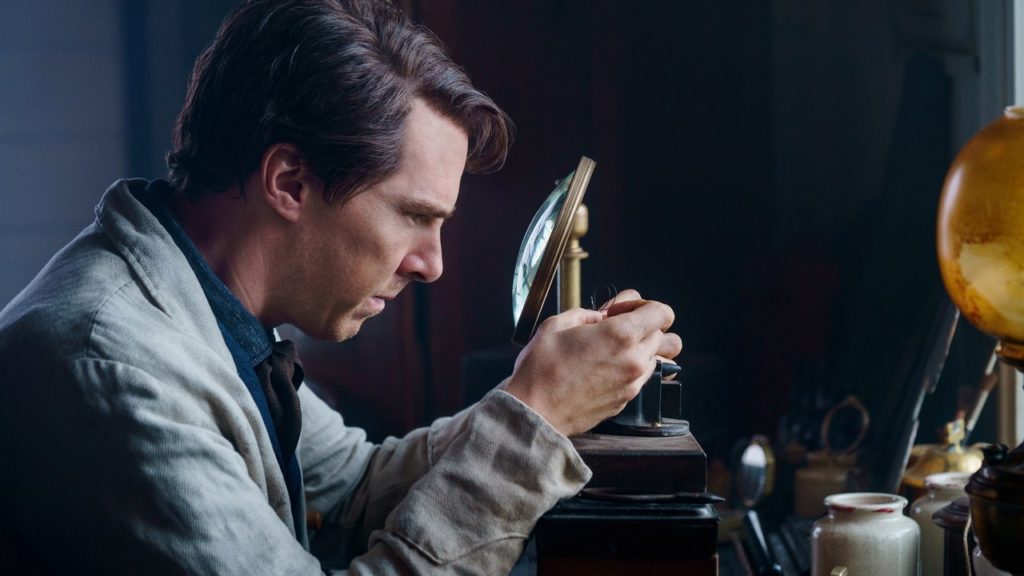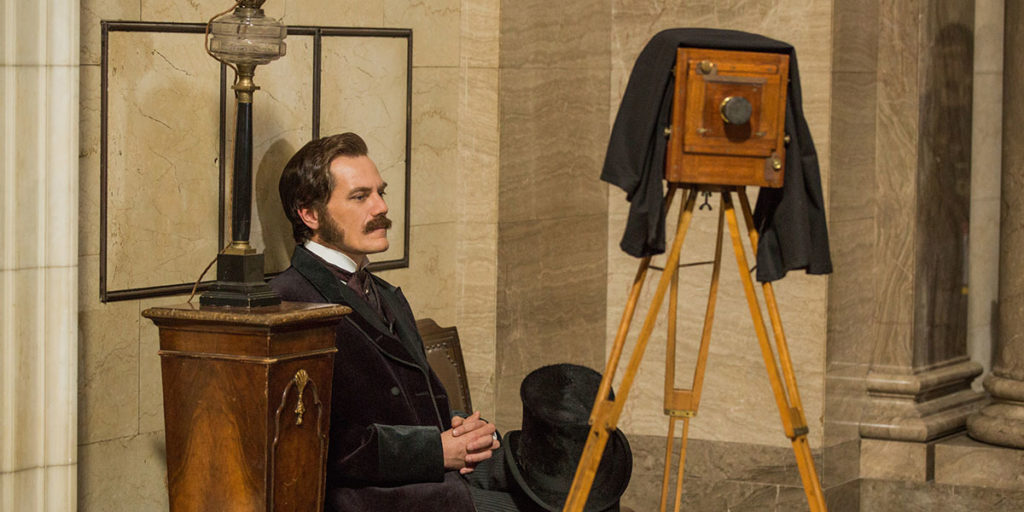The Current War tells the story of a literal power struggle, charting the historical battle between two Promethean men resolute on bringing light to every American household. Set over some years in the 1880s and 1890s, the film centres on the ‘war of currents’ between inventor Thomas Edison (Benedict Cumberbatch) and entrepreneur George Westinghouse (Michael Shannon).

These historical figures are effectively portrayed; Cumberbatch plays Edison the way he plays every other thorny genius (Imitation Game, Sherlock Holmes), while Shannon eclipses the rest of the cast with his warmer portrayal of the moustachioed businessman. Though it’s not evident from the trailer, Nicholas Hoult also has a significant presence as eccentric inventor Nikolas Tesla.
The supporting cast crackles with its own talent, with Katherine Waterston as Westinghouse’s ambitious wife Marguerite, while Tom Holland brings his usual brand of youthful likeability to the role of Samuel Insull, Edison’s secretary. Thoroughly underutilised despite being top billed, is the wonderful Tuppence Middleton who – historical spoiler alert – dies very early on. Not much to be done about that though, I suppose.

The Current War has been long-awaited. The 2017 film by Alfonso Gomez-Rejon became collateral damage of the Weinstein scandal and is only now, two years after the original cut premiered at the Toronto International Film Festival, getting its cinematic release. It’s been significantly reworked since, receiving a new distributor and a second round of editing: Reportedly, Gomez-Rejon added five scenes whilst cutting The Current War’s runtime by ten minutes.
This might go some way towards explaining the loss of focus and scattered feel of the film. Rather than centring solely on Edison and Westinghouse’s paralleled lives, and their fight over alternating current (AC) systems versus direct current (DC) supplies, the narrative threads split off in all directions. Though Tesla’s story begins with Edison, the film continues to follow him away from the electricity debate and through his failures as a painfully naive businessman; The Current War’s pacingis also derailed by side-plots about the creation of the electric chair, Westinghouse’s experience of the Civil War and boardroom pitches for the contract to power the Chicago World’s Fair.

Gomez-Rejon’s feature tries to do so much, that it drops the ball more than once along the way. Flashbacks to Westinghouse’s war days serve no purpose whatsoever, the emotional impact of Mary Edison’s death is minimal, and scenes of Edison’s family life feel obligatory rather than purposeful. Holland’s Samuel has no character arc, and the character of Tesla’s inclusion seems more like an afterthought than an integral part of the story.
That being said however, the last act hits all the right chords. The World’s Fair being lit up in a gorgeous demonstration of human progress is intercut with scenes of the first execution by electric chair. It’s a beautiful, awe-inspiring yet harrowing glimpse at the duality of human innovation, anchoring the viewer in this Promethean moment.
The Current War releases in cinemas Friday 26th.
